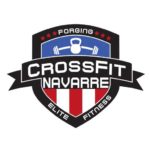What is Bootcamp? What is HIT? Are you telling yourself you are not ready to jump in a Bootcamp class, much less High-Intensity Bootcamp class? I can tell you now, that you are because Bootcamp is for everyone at any fitness level. Below I will explain what HIIT Bootcamp is, some of the benefits you will get from Bootcamp, and why Bootcamp is for you.
High Intensity (HIT) Bootcamp is a form of group exercise that combines a variety of total body movements performed in short bursts of high-intensity output intermixed with periods of rest. Bootcamps come in many different styles but they all have several things in common. In this blog, I will discuss six of the benefits you will get from becoming a regular Bootcamper.
- Bootcamp is for everyone: Bootcamp is not discriminatory. It doesn’t matter what your fitness level is, all populations (pregnant, fitness newbie, veteran fitness junkie, or 70 years old) will be able to perform each workout preserving the intended stimulus by modifying movements to fit your skill level.
- Time-saving and effective: If you want huge results but have limited time to commit to training, then joining a HIT Bootcamp class might be the best fit for you. Bootcamps are generally no longer than 1 hr and allow for the maximum amount of gains in the shortest amount of time. Studies have shown that HIT burns more calories in 15 min compared to one hour of work on any cardio machine. The way HIT Bootcamps are programmed helps you meet your personal goals while only committing to about three one-hour HIT sessions per week.
- Increases metabolism while burning fat and calories fast: A 2012 study by Paoli, et. al. showed that a short HIT session can burn more fat and calories compared to lower intensity longer duration training programs. HIT not only burns fat and calories faster during your training, but you continue to burn more fat and calories for up to 24 hours post workout; whereas, in conventional gym training you may not. This continued fat and calorie burning post workout is due to a concept known as Excess Post-Exercise Consumption (EPOC), aka “Afterburn”. This physiological mechanism is a huge contributor to weight management. Research demonstrates that the intensity of the exercise has the greatest impact on Excess Post-Exercise Consumption, aka the “Afterburn”. The higher the intensity, the greater the Afterburn effect which means more total calories burned. Now, regardless of the science behind this, who does not want to continue burning fat and calories after you finish working out? If 1 hr or less of HIT Bootcamp turns me into a fat burning machine, sign me up.
- Good for heart health: We have established that HIT is high-intensity training. During this type of training, you will reach an anaerobic zone that increases your heart rate and forces you to find your breath. Fortunately, you get to look forward to well-deserved rest between sets following that anaerobic state. This rest is what will help you push yourself through the stage of being uncomfortable. A 2010 study by Kemi and Wisloff reports that by continuously reaching this anaerobic zone, you will be steadily improving your heart health and circulation throughout your entire body.
- Movements apply to everyday life: Bootcamp prepares the body for real-world activities. The movements that are programmed are functional which means they are transferable into your normal daily activities. Bootcamp can prepare a mother to care for her newborn child. It can help an older individual climb stairs, carry their own groceries or even get out of a chair in their living room. What about catching your balance after tripping? It can help with that also. Everyone lives in the real world, so why not train in the real world to get real results that apply to your everyday life.
- Built around camaraderie: Bootcamp is generally performed in a group setting and creates a very energized and motivating experience, unlike conventional gym settings. Not only will you make new friends who encourage and motivate you during the entire workout, but the positive energy in the atmosphere sets you up for a more successful and enjoyable experience.
If you have been interested in trying a Bootcamp class, then come check us out at CrossFit Navarre. We welcome everyone of all fitness levels. All our coaches are highly trained with years of experience in the fitness industry. We build a foundation of strength and physical fitness before intensifying any program for every client that walks through our doors.
Currently, our Bootcamp classes run every Monday, Wednesday, and Friday at 6:00 a.m. and again at 9:00 a.m. Our classes last one hour and include a warm-up, core and strength segment, a high-intensity workout followed by a cool-down. Some types of exercises you can expect to see would be push-ups, lunges, kettlebell swings, planks, jump rope, battle ropes, dumbbells movements, farmer carries, pull-ups, run, deadlifts, tire flips, sleds, and squats. This list is definitely not all-inclusive and varies daily. Our HIT Bootcamp program combines a variety of total body movements utilizing mixed modalities in short bouts of high intensity to achieve maximal fitness gains over a short period of time.
At CrossFit Navarre, you’re guaranteed the best fitness experience while reaching your lifestyle goals and more.
Contributed by Courtney Nelson Seely, CF-L1 Coach, CFN Coach
Sources:
Paoli, A., et al. 2012. High-intensity interval resistance training (HIRT) influences resting energy expenditure and respiratory ratio in non-dieting individuals. Journal of Translational Medicine, 10, 237.
Kravitz, L. (2015). Research sheds new light on the exercise “afterburn.” IDEA Fitness Journal, 12(4), 16-18.
Vella, C.A. and Kravitz, L. (2004). Exercise After-Burn: A Research Update. IDEA Fitness Journal, 1(5), 42-47.
Kemi, O.J.; Wisloff, U. (2010) High-Intensity Aerobic Exercise Training Improves the Heart in
Health and Disease. Journal of Cardiopulmonary Rehabilitation and Prevention, 30(1), 2-11[/vc_column_text][/vc_column][/vc_row]

